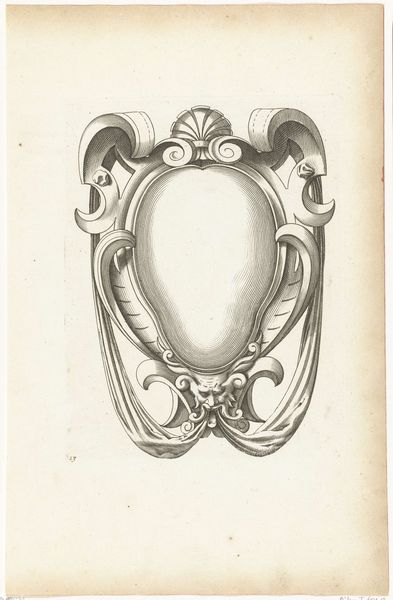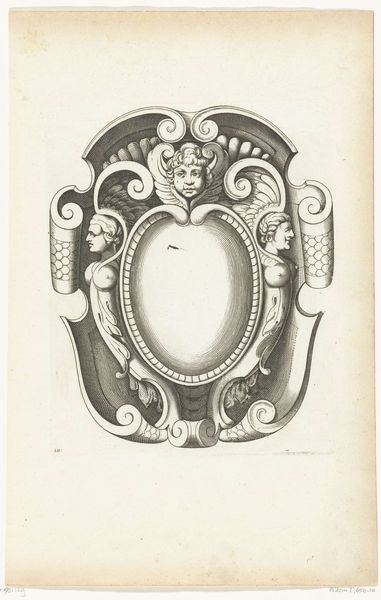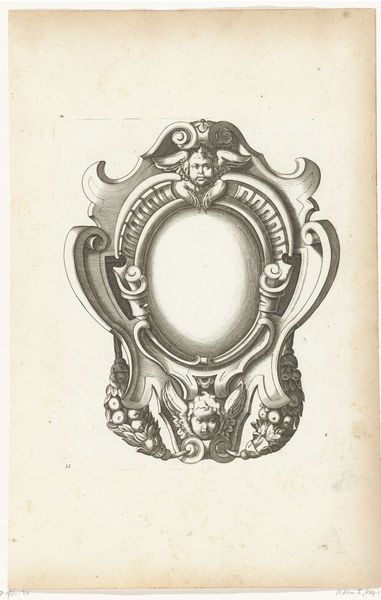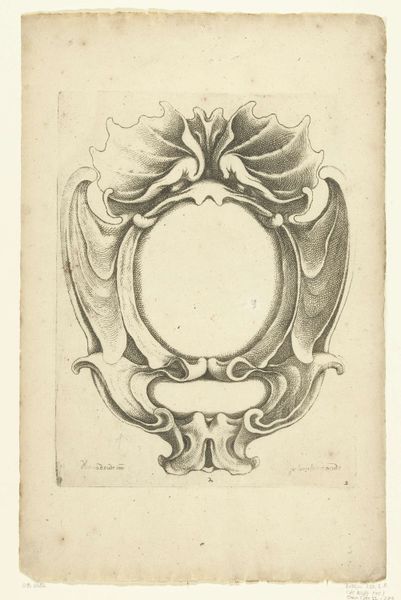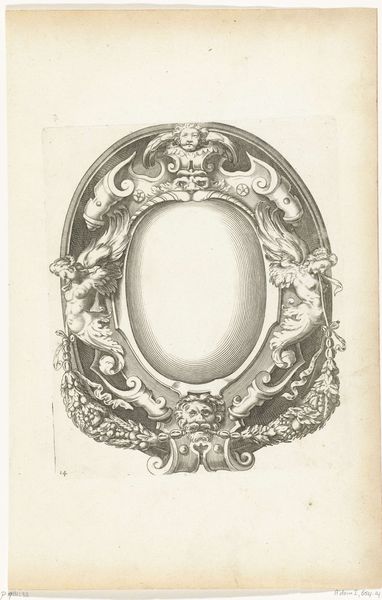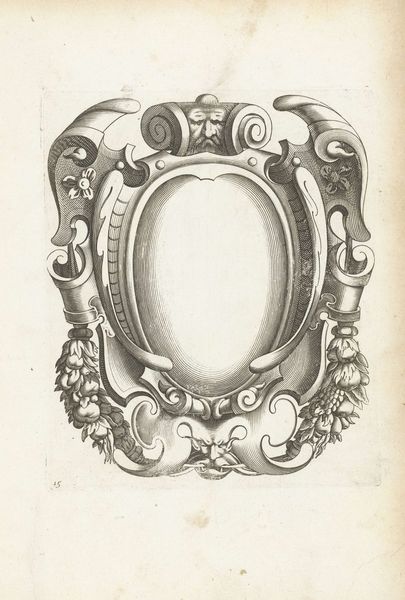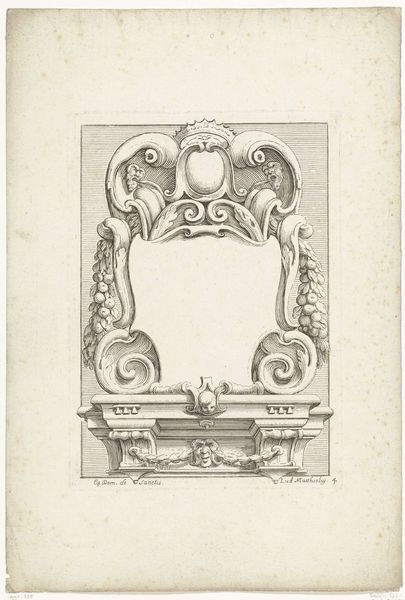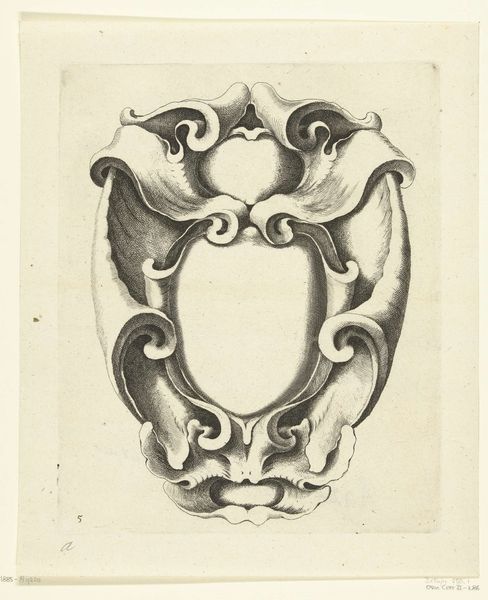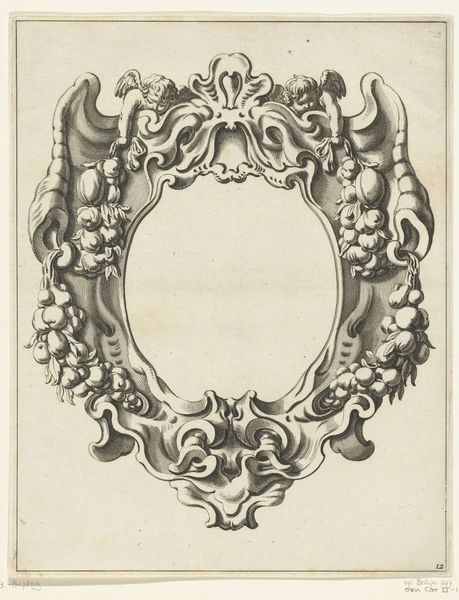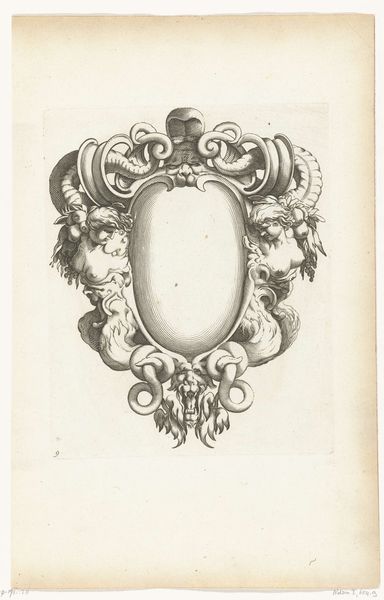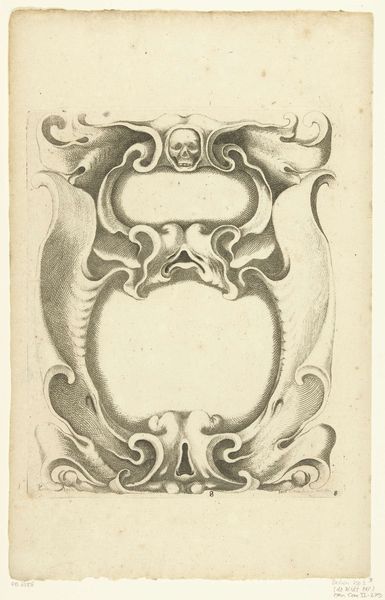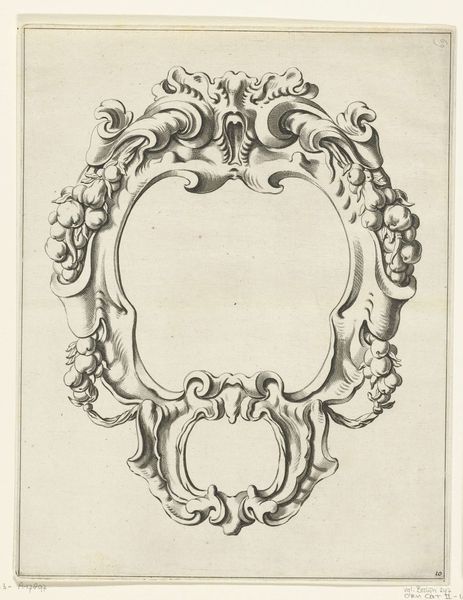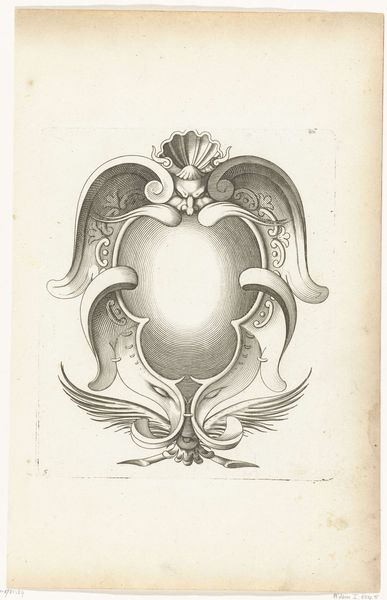
print, engraving
#
baroque
#
pen drawing
# print
#
form
#
engraving
Dimensions: height 183 mm, width 152 mm
Copyright: Rijks Museum: Open Domain
Curator: The clean lines and careful detailing here remind me of old architectural blueprints. Editor: It's the print "Cartouche met mascaron dat trosje vruchten in de mond heeft", created sometime between 1613 and 1657 by Pierre Firens, that has a striking composition—starkly elegant, but there’s something playful in it too. Curator: Playful isn’t quite the word I’d use. I see a tension, between the controlled engraving and the rather grotesque mascaron struggling with what appears to be a bunch of fruit forced into its mouth. I read this through a lens of power dynamics—who controls pleasure, consumption, even representation? Editor: It's undeniable that there is something uncomfortable there. I am very curious about the physical labor that went into such refined craftsmanship back then, as the method would inform who would receive such artworks, right? How might class be at play here? Curator: Absolutely! Considering the socio-economic structure of the time, such a level of detail suggests a very specific market and a defined audience—likely affluent and educated enough to appreciate the craftsmanship. This in turn creates this loop. Who are these images for, who makes these images? The art doesn't come from nowhere. It comes from very precise origins that speak to hierarchies. Editor: That’s a valuable perspective, and speaks volumes. Looking at it from my view, the print medium itself allows for a certain level of dissemination. Were these patterns eventually re-created through other mediums—perhaps even embroideries? How far did this type of aesthetic vision truly disseminate within other materialist environments, to other audiences through imitations of this piece? Curator: Interesting! These works, in their original or emulated forms, likely permeated various levels of society. Editor: Ultimately, thinking about the hands involved in production and distribution illuminates the tangible link between art and its societal context, while also providing some clues to how class functions at different levels. Curator: I think it brings us back to questioning whose stories are told, how labor intersects with the visual and, most importantly, whose gaze truly benefits from this form of controlled artistic labor.
Comments
No comments
Be the first to comment and join the conversation on the ultimate creative platform.
